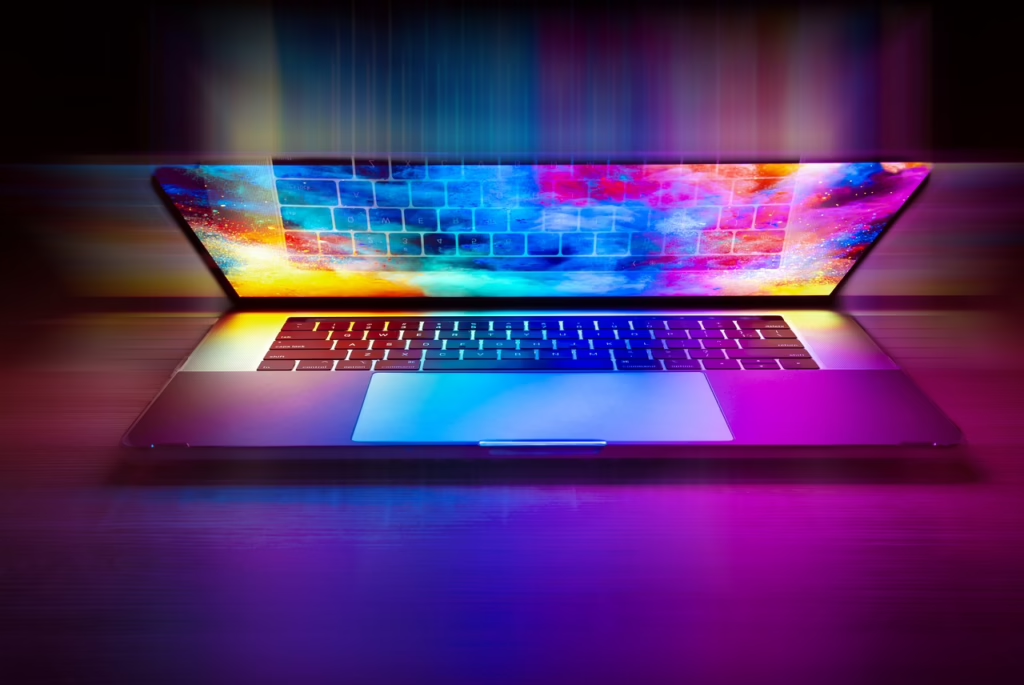Computers and smartphones are essential devices in our daily lives. They help us work, study, communicate, and entertain ourselves. Both have many important components that allow them to function efficiently.
Main Components of a Computer
A computer consists of several key parts:
- Motherboard – This is the main circuit board that connects all the components. It allows communication between different parts of the computer. (Płyta główna)
- Central Processing Unit (CPU) – Also called the processor, it is the „brain” of the computer. It processes information and runs programs. The speed of a CPU is measured in gigahertz (GHz). (Procesor)
- Random Access Memory (RAM) – This is temporary memory that helps the computer run multiple programs at the same time. More RAM means better performance. (Pamięć RAM)
- Hard Drive (HDD) / Solid-State Drive (SSD) – These store all the data, including the operating system, programs, and personal files. SSDs are faster than HDDs. (Dysk twardy (HDD) / Dysk półprzewodnikowy (SSD))
- Graphics Processing Unit (GPU) – A separate processor that handles graphics and video. It is important for gaming and video editing. (Karta graficzna)
- Power Supply Unit (PSU) – Converts electricity from the outlet to power the computer. (Zasilacz)
- Cooling System – Keeps the computer from overheating. This includes fans and liquid cooling systems. (System chłodzenia)
Smartphone Components and Functions
Smartphones are compact computers with additional features. Their key parts include:
- Processor (CPU + GPU) – Similar to a computer, but optimized for mobile devices. (Procesor)
- RAM and Storage – RAM allows smooth performance, while storage (e.g., 128GB, 256GB) holds apps, photos, and files. (Pamięć RAM i pamięć wewnętrzna)
- Display – Modern smartphones use OLED or LCD screens. They vary in size and resolution, measured in pixels. (Ekran)
- Battery – A lithium-ion battery powers the device. Battery life is measured in milliampere-hours (mAh). (Bateria)
- Camera System – Phones have multiple cameras (wide-angle, telephoto, macro) with different megapixels (MP) and optical zoom. (Aparat fotograficzny)
- Operating System (OS) – Smartphones run on iOS or Android. (System operacyjny)
- Sensors and Connectivity – Includes fingerprint scanners, facial recognition, Bluetooth, Wi-Fi, and 5G. (Czujniki i łączność)
Technical Specifications to Consider
When buying a computer or smartphone, it is important to check these specifications:
- Processor speed – Measured in GHz (higher is faster).
- Number of cores – More cores (quad-core, octa-core) improve performance.
- RAM capacity – 8GB is standard for smartphones, 16GB+ is good for computers.
- Storage – SSDs are better than HDDs; smartphones need at least 128GB.
- Battery life – A phone with a 5000mAh battery lasts longer.
- Screen resolution – Full HD (1080p) or higher for better quality.
Conclusion
Computers and smartphones are powerful devices that help us in many ways. Understanding their components and technical specifications can help us choose the best device for our needs.
- Motherboard – Płyta główna
- Processor (CPU) – Procesor
- Graphics card (GPU) – Karta graficzna
- RAM (Random Access Memory) – Pamięć RAM
- Storage (HDD/SSD) – Dysk twardy / Dysk SSD
- Cooling system – System chłodzenia
- Display resolution – Rozdzielczość ekranu
- Operating system (OS) – System operacyjny
- Battery life – Czas pracy baterii
- Connectivity – Łączność

